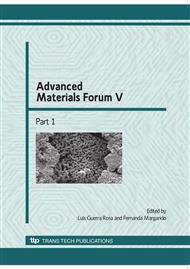p.605
p.612
p.618
p.624
p.631
p.637
p.643
p.651
p.657
Modifications of Alloying Elements in Martensitic 8-10%Cr-Steels and its Influence of Neutron Irradiation on Material Properties
Abstract:
9 – 12%Cr-MoVNb steels are successful materials for the use at higher temperatures. The universal application in turbines and power plants promises an expedient material for fission and future fusion reactors. Different developmental alloys were fabricated, irradiated and mechanically tested to optimize the material properties. Already, after the first irradiation tests could be shown that this type of steel has a reduced swelling and much faster decay of radioactivity than e.g. austenitic Cr-Ni-steels. This inherent property of reduced activation includes a high recycling potential. Further variations in the chemical compositions were carried out to increase the decay of radioactivity and to reduce the hardening and strengthening by neutron irradiation. The state of development today is a 9%Cr-WVTa-alloy, which is called EUROFER. The post-irradiation behavior and the development of material matrix are shown in comparison with further test alloys. The emphasis is to characterize the hardening mechanisms by irradiation at lower temperatures, which appear in helium bubbles, interstitial loops, and α`-precipitates.
Info:
Periodical:
Pages:
631-636
Citation:
Online since:
January 2010
Authors:
Price:
Сopyright:
© 2010 Trans Tech Publications Ltd. All Rights Reserved
Share:
Citation:


